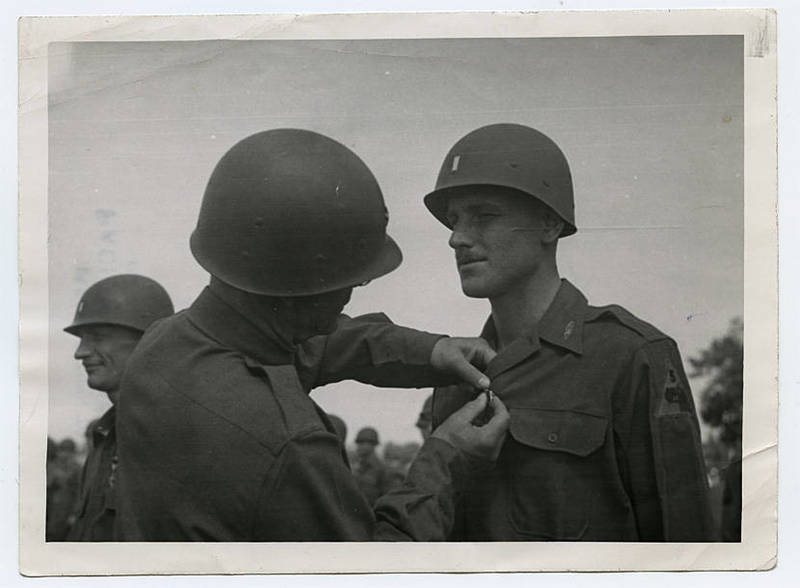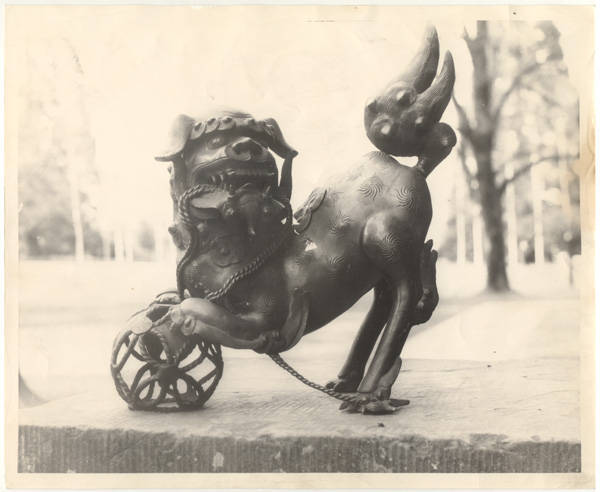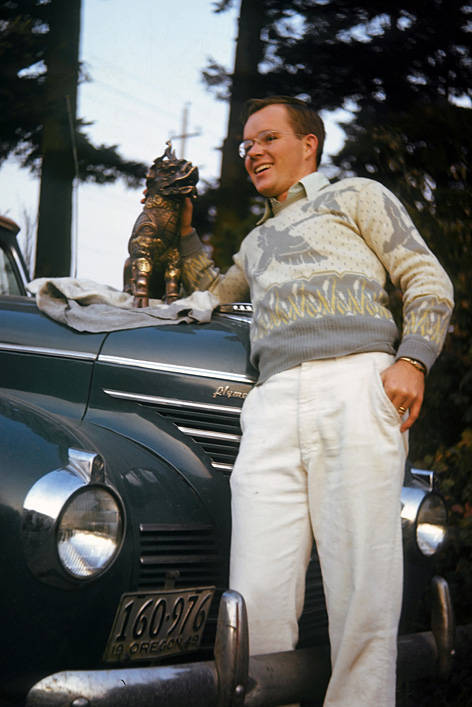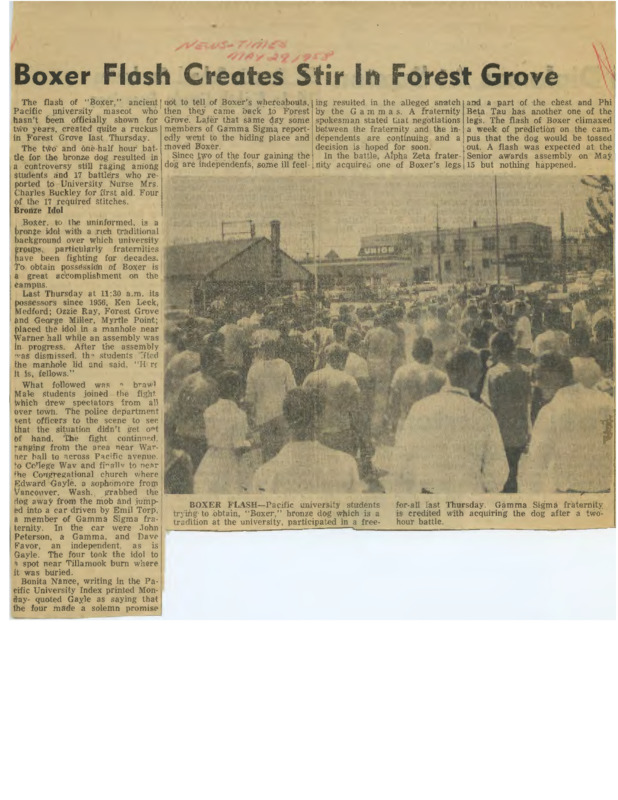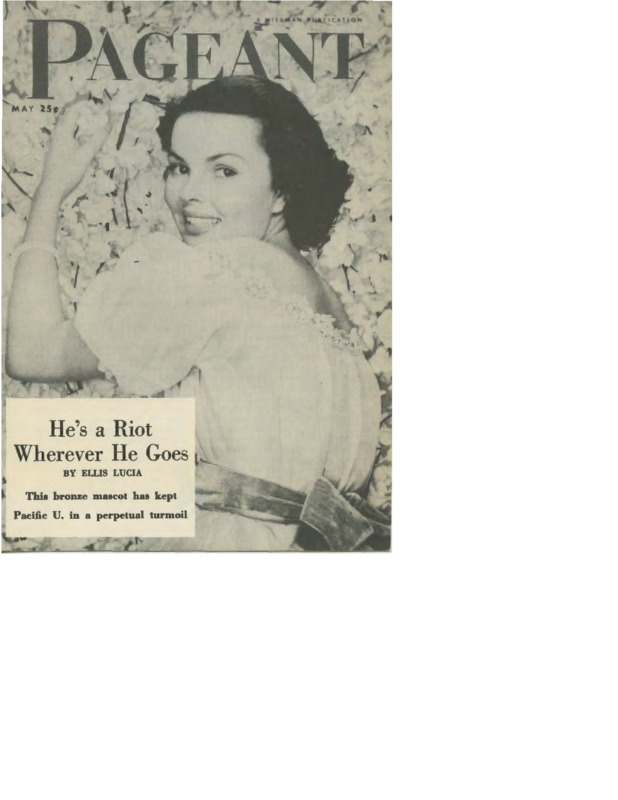1940s-1950s: Boxer is a Riot
The 1940s started ominously. Hitler had just invaded Poland, while the world economy was still reeling from the Great Depression. After the attack on Pearl Harbor on December 7, 1941, the United States joined World War II. By the following spring, nearly every male student on Pacific's campus enlisted in the military. Those who could not join up supported the home front. A few Japanese students at Pacific tragically were forced into internment camps, and at least 30 Pacific men and one woman died in the war. Under these circumstances, most college sports, dances, and other social activities came to a standstill. Boxer made few, if any, public appearances on campus during the war. (For more on Pacific during World War II, see Luckett, "The Last Rich Year," Pacific Magazine, Fall 2010).
When victory was declared in 1945, the nation flooded with relief and hope for the future. Millions of Americans who had served on active duty were eligible for the G.I. Bill, which offered to cover college tuition payments.* Veterans enrolled at Pacific in droves. Women students had dominated the campus' population during the war, but that completely reversed in the postwar years. "In the freshman class of 1953 men outnumbered women two to one, while the sophomore ratio was nearly four to one, the juniors three to one, and the seniors slightly more than two to one," Pacific's historians calculated (Splendid Audacity, p. 98).
School spirit revived along with the optimistic mood on campus. Interest in football games, fraternity parties, dances and men's service organizations all grew dramatically. "It is surprising how the school spirit has regained its old standard with the honest-to-goodness return of football and all the sports in general," one school newspaper editor wrote (The Index, Oct. 4, 1946, p. 4).
*The G.I. Bill's benefits covered "veterans who had been on active duty during the war years for at least 90 days and had not been dishonorably discharged." In practice, the G.I. Bill mostly benefitted white males. For a discussion and links to more sources, see the Wikipedia article on the GI Bill.
Women who had stayed at Pacific during the war re-introduced the Boxer tradition to incoming classes. Boxer appeared a few times just after the end of the war, but then the statue disappeared from public view for about two years. In 1948, an alum proposed a replacement: "Ming," another bronze statue from Asia. Ming was not a qilin like Boxer, but was instead a lion or a dog. Students did not accept the new statue as Boxer's equal. But: they decided to steal it as a prank, anyway. Installed in Pacific's museum on the second floor of Old College Hall, Ming was stolen around 1959. Alumni returned it years later, and Ming was put back into the museum, where it remains to this day.
In the fall of 1948, the original Boxer finally came back out of hiding. Pacific students were always ready for someone to yell out, "BOXER!" signalling a reappearance of the statue on campus -- and a battle to possess it. Many dramatic "Boxer Tosses" occured during the 50s. On one occasion, the statue was literally thrown off the roof of Tabitha Brown Hall into a scrum of fifty brawlers. On another occasion, Boxer was frozen into a block of ice, which students then battled over for hours. Each time students "tossed" the statue, large crowds gathered and spilled into the streets, either fighting for control of Boxer or watching the spectacle unfold.
The tradition of Boxer Tosses made national news in 1950 when an alum, Ellis Lucia, published a magazine article titled, "He's a Riot Wherever He Goes." Lucia described how students felt about their College Spirit:
They love him dearly, but show their affection by ripping him apart every chance they get. In retaliation, Boxer has been the instigator of more battered shins, bloody noses, torn clothing and downright double-crosses than any other incense burner in the world.
Boxer was indeed looking worse for wear by the end of the decade. Ripped apart and welded back together numerous times, parts of the statue now almost looked melted. But Boxer also now eclipsed any other symbol of Pacific's student body -- certainly exceeding the importance of the school's "Badger" mascot. Soon, Boxer's role would be made official.

